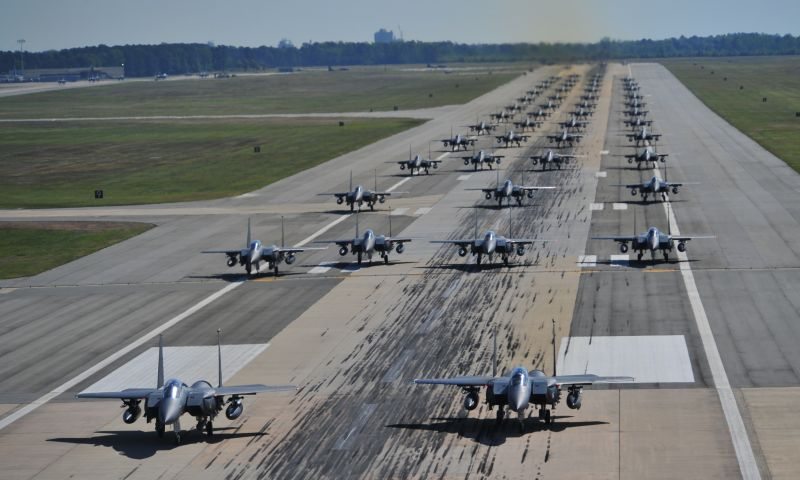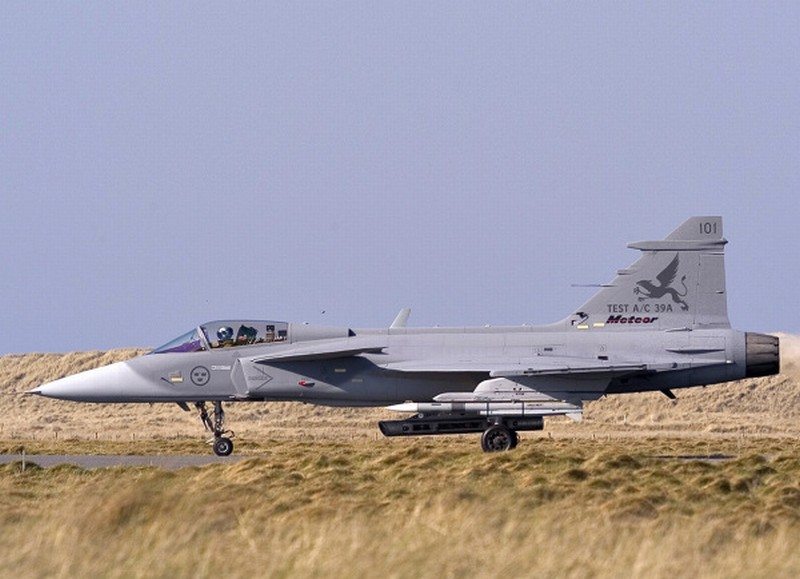The Air Force’s $114.1 billion fiscal 2014 budget request will provide for the most capable airpower arm possible, the Air Force chief of staff said here today.
Testifying with Secretary of the Air Force Michael B. Donley, Gen. Mark A. Welsh III told the House Armed Services Committee his service’s portion of DOD’s fiscal 2014 budget proposal will support what he believes will be a continuing demand for American airpower.
“America’s foreign policy choices reflect the conscious reliance on its Air Force to help realize success,” Welsh said. This, he said, currently involves managing the airlift requirements for a responsible drawdown in Afghanistan, addressing increasingly vocal international actors in the Asia-Pacific region, and satisfying the growing national reliance on space-based capabilities, he said.
The general said these choices are also bounded by shifting fiscal realities that will force the entire Defense Department to focus on capabilities and missions that are essential in the future.
“As an indispensable part of that joint force, the Air Force intends to continue operating in air, space and cyber, and to prioritize those core missions that have existed since our birth as a separate service in 1947,” Welsh said.
“America’s Airmen perform these missions exceptionally well,” he added. “And in doing so, they do provide global vigilance, global reach and global power for America.”
Welsh said the fiscal 2014 budget request does not fully account for necessary recovery actions from the current budgetary turbulence, and it doesn’t fully incorporate the potential cuts for sequestration in 2014 and beyond.
The proposed budget, however, does prioritize efforts to reverse the Air Force’s declining readiness trend, he said, noting that low states of readiness negate many of the strategic advantages of airpower.
“Flying hours are allocated to maintain, and in some cases, incrementally improve readiness levels across the total force in this budget,” Welsh said. “In the past, we’ve relied on overseas contingency operations funding to partially fund those flying hour programs and to maintain our current and substandard readiness levels.”
The general said the Air Force will continue to reduce its reliance on OCO funding for the flying hour program through 2015.
“At which point,” he said, “we should have as much as 90 percent of our peacetime flying requirement back in our baseline budget.”
Additionally, Welsh said, the Air Force has restored emphasis on its training ranges, funding about 75 percent of the requirement in that area, up from recent lows of only 25 percent.
After years of trading quantity for quality, he said, the Air Force now has fewer people in aircraft than at any time since it became an independent service.
“Unfortunately, while the numbers have gone down, both the real cost of personnel and their proportion relative to the rest of the budget has increased dramatically,” Welsh said.
Meanwhile, “pay and benefits continue to rise, as have the costs of the Defense Department health care program, which has grown approximately 270 percent over the last 11 years,” he said.
Welsh said Air Force leadership supports DOD’s request to limit the military pay raise to only 1 percent in this budget proposal and to explore “meaningful” modifications in the TRICARE health care system.
The Air Force will look to consolidate infrastructure and reduce excess capacity where allowed, he said, and supports DOD’s request for further base realignment and closure authority in fiscal 2015.
“As difficult as a BRAC would be for everyone, we can simply no longer afford to retain unnecessary overhead that diverts precious resources from readiness and modernization,” Welsh said.
Welsh said the Air Force’s portion of the proposed fiscal 2014 budget also strives to protect modernization to support current defense strategic guidance.
“The KC-46 (tanker), F-35 (Lightning II) and long-range strike bomber remain our top-three investment priorities,” he said. “We need the F-35. It remains the best platform to address the proliferation of highly capable integrated air defenses and new air-to-air threats.”
And the long-range strike bomber “will give our nation a flexible, credible capability to strike globally with precision on limited notice should the national interest require,” Welsh added.
The KC-46 tanker is the Air Force’s highest modernization priority, he said, and it will ultimately replace a third of the current tanker fleet.
“(This) tanker fleet puts the ‘global’ in global vigilance, global reach, and global power,” Welsh said. “It provides strategic options for our nation. We simply must modernize it.”
The general also noted that four of the Air Force’s 10 largest modernization programs are space-based platforms.
“We’ll also contend to invest in our most important resource — our Airmen,” Welsh said. “We’ll provide the training, education, and professional development opportunities they need to be the best in the world at what they do.
“If we can’t do that, they will find other work,” he added. “We’ll continue to do everything in our power to care for our Airmen and their families, while balancing the resources required to do that, with the understanding that our primary job is to fight and win the nation’s wars.”
Welsh said it is his job to help Donley field the best fighting force possible.
“I believe our 2014 budget request moves us in that direction,” the general said. “It postures the Air Force to improve readiness, to limit force structure, and to limit force structure cost and to protect vital modernization.”











